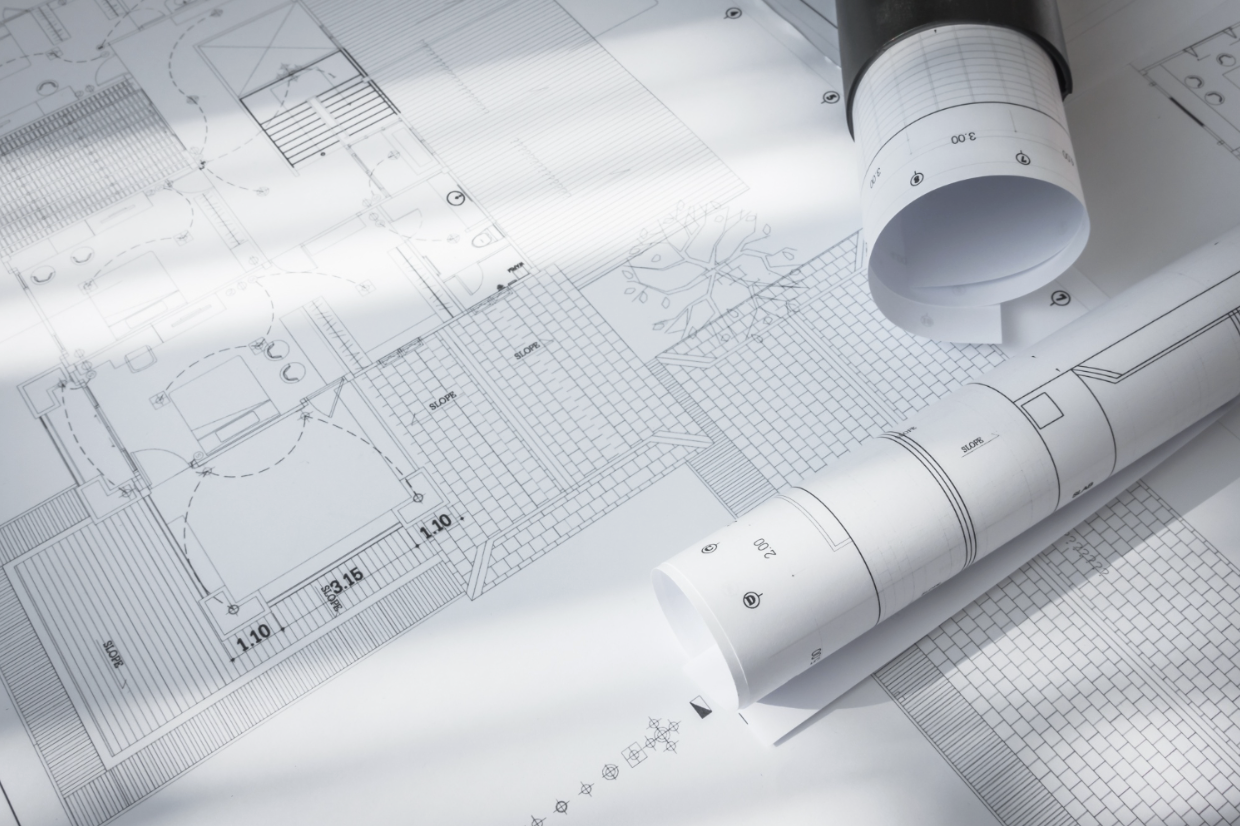
In commercial construction, organization, classification, and standardization are crucial for efficient project management and communication. As part of the MasterFormat® classification system, different construction elements are categorized into divisions, helping professionals navigate construction specifications, procurement, and facility management efficiently. This standardized system, developed by the Construction Specifications Institute (CSI), ensures clarity across the construction industry, streamlining cost estimating, design specifications, and compliance.
What is the MasterFormat® Classification System?
The CSI MasterFormat® classification system is a construction project framework widely used in the built environment to standardize the organization of building materials, equipment, and infrastructure components. It provides a database-like structure for construction specifications, ensuring effective communication between general contractors, architects, engineers, and facility managers.
MasterFormat® is divided into 50 divisions, covering everything from structural steel and masonry to plumbing, ventilation, and electrical power generation. These divisions ensure that contractors and project managers can efficiently handle procurement, cost estimation, and maintenance planning.
Why is the MasterFormat® System Important?
Standardization Across the Construction Industry
- MasterFormat® creates a structured language that simplifies project communication among architects, civil engineers, and construction managers.
Efficient Project Planning & Procurement
- By categorizing building materials, equipment, and handling equipment, MasterFormat® ensures that procurement processes remain seamless.
Cost and Budget Management
- The work breakdown structure of MasterFormat® assists in cost estimating, allowing contractors to manage budgets effectively.
Integration with Building Information Modeling (BIM)
- The adoption of BIM technology enhances data-driven construction projects, improving efficiency, sustainability, and risk management.
How Division 8 Fits into MasterFormat®: Doors, Frames, and Hardware
One crucial section within the MasterFormat divisions is Division 8: Openings, which focuses on commercial doors, frames, and hardware. These components are vital for ensuring building safety, automation, and structural efficiency.
Common Division 8 products include:
- Steel and aluminum doors for high-security and high-traffic areas
- Fire-rated doors to prevent the spread of smoke and fire
- Automatic doors for accessibility and convenience
- Access control hardware, including keycard readers, biometric locks, and electronic keypads
Proper selection of Division 8 products ensures compliance with fire codes, energy efficiency standards, and ADA regulations.
For a detailed look at Division 8 products, read our guide here.
The Role of Division 10: Specialties in Construction Design
In addition to Division 8, another critical MasterFormat® division is Division 10: Specialties, which covers various architectural and building specialties that enhance functionality, safety, and compliance. Division 10 includes prefabricated construction elements that are often added after a building’s primary structure is in place.
Key Division 10 Products Include:
- Fire extinguishers and cabinets for fire safety compliance
- Toilet partitions and restroom accessories in commercial buildings
- Signage for wayfinding, safety, and ADA compliance
- Lockers and storage systems for schools, gyms, and workplaces
- Wall and corner guards to protect interior surfaces from damage
- Postal and delivery systems, including secure mailboxes
These Division 10 components are essential in schools, hospitals, hotels, office buildings, and industrial facilities, ensuring durability, accessibility, and regulatory compliance.
Other Key Divisions in MasterFormat®
- Division 3 – Concrete & Masonry: Covers structural concrete, construction equipment, and waterproofing materials.
- Division 5 – Metals: Includes steel framing, metal fabrication, and conveying equipment.
- Division 9 – Finishes: Covers plaster, drywall, and specialty coatings for moisture resistance.
- Division 21 – Fire Suppression: Focuses on fire safety equipment, risk management, and compliance.
- Division 26 – Electrical: Covers electrical power generation, automation, and lighting control systems.
The Future of MasterFormat® and Construction Innovations
As the construction industry continues to evolve, MasterFormat® is adapting to integrate modern technology, sustainability, and automation. Key innovations include:
1. Smart Building Automation
- Cloud-connected access control systems for real-time security monitoring
- Automated door systems with AI-powered sensors to reduce energy consumption
- Integration of BIM technology to improve data accuracy and project efficiency
2. Sustainability & Green Building Materials
- Energy-efficient doors with thermal insulation to reduce heating and cooling costs
- Low-emission coatings and recycled materials for environmentally friendly building material procurement
- Advanced moisture-resistant products to prevent mold and structural damage
3. Advanced Safety and Compliance Measures
- More stringent fire safety regulations for Division 8 and Division 10 products
- Enhanced ADA compliance standards for automatic doors and restroom accessibility
- Smart ventilation systems that improve indoor air quality and HVAC efficiency
Conclusion: Why MasterFormat® Matters in Construction Projects
The MasterFormat® classification system is essential for construction project efficiency, risk mitigation, and infrastructure development. By categorizing elements like doors, frames, structural steel, and safety equipment, MasterFormat® ensures seamless project execution and sustainability. Staying informed on MasterFormat® divisions, CSI guidelines, and innovation in construction management helps businesses remain competitive and compliant.
Get Expert Guidance on Division 8 & 10 Products – Contact Mills & Nebraska Today!
The success of any commercial construction project hinges on the quality, reliability, and compliance of its components—especially when it comes to Division 8 doors, frames, hardware, and Division 10 specialties. At Mills & Nebraska, we combine decades of industry expertise with a comprehensive product selection to help your project stay on time, on budget, and in compliance with MasterFormat® standards.
We provide tailored solutions for commercial buildings, industrial facilities, hospitals, schools, and office spaces. Our team ensures proper procurement, compliance, and installation, so you get the best products for your construction project.
Contact Mills & Nebraska today to speak with our specialists and get tailored Division 8 & Division 10 solutions that set your project up for success.
FAQs (Frequently Asked Questions)
What is the MasterFormat® classification system?
The MasterFormat® classification system is a standardized framework developed by the Construction Specifications Institute (CSI). It organizes construction information into 50 divisions, making it easier for architects, contractors, and facility managers to communicate, plan, and execute building projects efficiently.
How does Division 8 (Openings) fit into MasterFormat®?
Division 8 of the MasterFormat® system focuses on openings, such as commercial doors, frames, windows, and hardware. These components are critical for building security, accessibility, fire safety, and energy efficiency. Mills & Nebraska specializes in Division 8 products, offering custom fabrication and expert consultation.
What is the difference between Division 8 and Division 10?
While Division 8 covers doors, frames, and hardware, Division 10 pertains to specialties like toilet partitions, fire extinguishers, signage, and lockers. These items are often non-structural elements added after a building's main structure is complete. Mills & Nebraska provides top-quality Division 10 products that complement Division 8 openings and enhance building functionality.
Why is MasterFormat® important for construction projects?
MasterFormat® simplifies communication across the construction industry by providing a universal language for materials, processes, and systems. It helps reduce errors, streamline procurement, improve cost estimation, and ensure regulatory compliance—especially for large-scale, multi-disciplinary projects.
What industries commonly use the MasterFormat® classification system?
The MasterFormat® classification system is widely used across various industries involved in construction, including commercial and residential construction, civil infrastructure, healthcare facilities, educational institutions, manufacturing plants, and government buildings. Its standardized structure helps professionals across these sectors efficiently manage specifications, procurement, and compliance.
.jpg)
.png)



